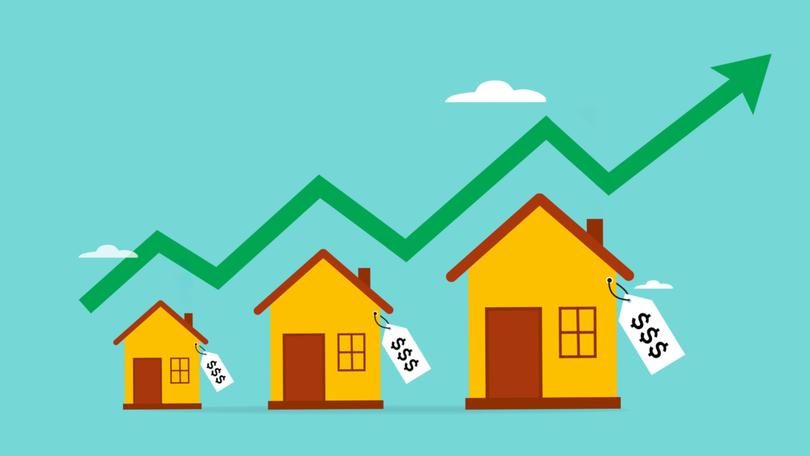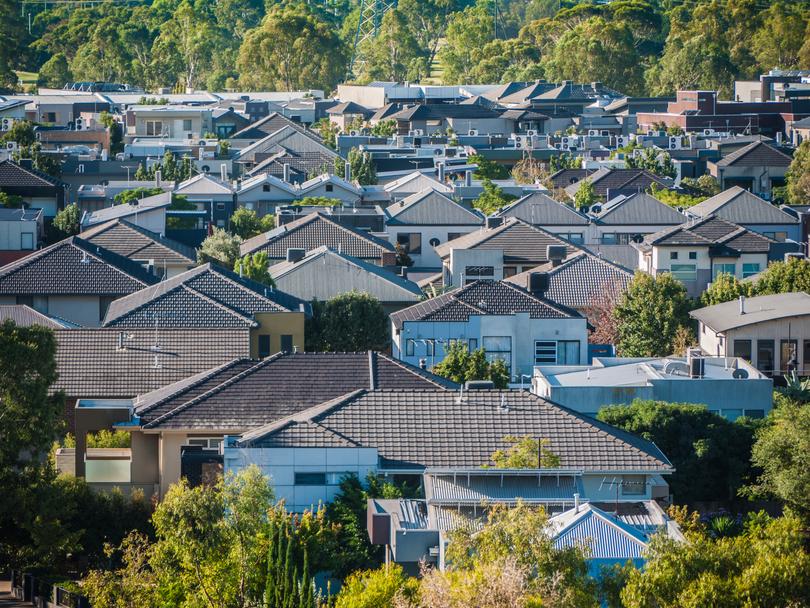THE ECONOMIST: The house-price supercycle is just getting going

After the financial crisis of 2007-09, global house prices fell by 6 per cent in real terms. But, before long, they picked up again, and sailed past their pre-crisis peak.
When COVID-19 struck, economists reckoned a property crash was on the way. In fact there was a boom, with mask-wearing house-hunters fighting over desirable nests.
And then from 2021 onwards, as central banks raised interest rates to defeat inflation, fears mounted of a house-price horror show.
Sign up to The Nightly's newsletters.
Get the first look at the digital newspaper, curated daily stories and breaking headlines delivered to your inbox.
By continuing you agree to our Terms and Privacy Policy.In fact, real prices fell by just 5.6 per cent — and now they are rising fast again.
Housing seems to have a remarkable ability to keep appreciating, whatever the weather.
It will probably defy gravity even more insolently in the coming years.
The history of housing involves a once-unremarkable asset class turning into the world’s largest.
Until about 1950, the rich world’s house prices were steady in real terms.
Builders put up houses where people wanted them, preventing prices from rising much in response to demand.
The roll-out of transport infrastructure in the 19th and early 20th centuries also helped temper prices, argues a paper by David Miles, formerly of the Bank of England, and James Sefton of Imperial College London.
By allowing people to live farther from their place of work, better transport increased the amount of economically useful land, reducing competition for space in urban centres.
Events that followed the second world war turned all these processes on their head, creating the housing supercycle that we live with today.
Governments got into the business of subsidising mortgages.
People in their 20s and 30s were having lots of children, boosting the need for housing.
Urbanisation raised demand for shelter in places that were already crowded.
The second half of the 20th century brought a slew of land-use regulations and anti-development philosophies.
It became harder to build infrastructure, making cities less expandable.
Metropolises that had once built housing with aplomb, from London to New York, applied the brakes.
Across the rich world, construction of houses expressed as a share of the population peaked in the 1960s, then fell steadily to about half its level today.
House prices began to move inexorably upwards.
The past few years have been less disruptive to housing markets than even optimistic forecasters were predicting three years ago.
As central bankers have raised rates, many mortgage-holders have not felt a thing.
Before and during the pandemic many had loaded up on fixed-rate mortgages, shielding them from higher rates.
In America, where many people fix their mortgage-interest rate for 30 years, households’ mortgage-interest payments, as a share of income, remain steady.
New buyers are facing higher mortgage costs.
But rapid earnings growth is helping counteract this effect.
Wages across the G10 group of countries are 20 per cent higher than they were in 2019.
Not everywhere has emerged unscathed.
In Germany, New Zealand and Sweden real house prices have tumbled by more than 20 per cent since pandemic peaks.
Yet in other places, house prices only dropped a bit, and a boom of sorts is under way.
American house prices reach new highs nearly every month, having risen by 5 per cent in nominal terms in the past year.
In Portugal prices are soaring. Other places with weak housing markets are turning them around.
From 2011 to 2019 house prices in Rome fell by more than 30 per cent in nominal terms, as Italy dealt with a sovereign-debt crisis. Now they are rising again.
In the short term house prices will probably keep rising. Falling interest rates help.
In America the rate on a 30-year fixed mortgage has fallen by close to 1.5 percentage points from its recent peak.
In Europe a wave of fixed-rate borrowers will soon be able to refinance at lower rates, as central banks cut their policy rates.
But there are deeper forces at work, too.
Three factors will ensure that, for decades to come, the housing supercycle endures.
The first relates to demography. We calculate that the rich world’s foreign-born population is rising at an annual rate of 4 per cent, the fastest growth on record.
Immigrants need a place to live, which, research suggests, tends to lift both rents and house prices.
A recent paper by Rosa Sanchis-Guarner of Barcelona University, looking at Spain, finds that a one-percentage-point rise in the immigration rate boosts average house prices by 3.3 per cent.
In response to record arrivals, politicians from Canada to Germany are clamping down on immigration.
But even under the strictest policies, rich countries will probably continue to receive more migrants than they used to.
Their need to cater to an ageing population is likely to overwhelm a desire to tighten borders.
Goldman Sachs, a bank, reckons that if Kamala Harris wins the American presidential election, net immigration will fall gently, to 1.5 million per year from well over 2 million in 2024.
If Donald Trump wins with a split government, they expect it will fall only to 1.25 million.
The second factor relates to cities. When COVID-19 struck in 2020, many people thought that urban areas would lose their shine.
The rise of remote work meant that, in theory, people could live anywhere and work from home, enabling them to buy roomier housing for less money.
It has not worked out that way. People work from home a lot more than they used to, but big cities retain their draw.
In America 37 per cent of businesses are located in large urban areas, the same share as in 2019.
We calculate that the share of the rich world’s overall employment taking place in capital cities has grown in recent years.

In Japan, South Korea and Turkey, more jobs are created in capitals than elsewhere.
They are also home to more fun: the share of Britain’s bars and pubs located in London has risen a tad since before the pandemic.
All this raises competition for living space in compact urban centres, where the supply of housing is already constrained.
The city’s triumph compounds the effects of the third factor: infrastructure.
In many cities commuting has become more torturous, limiting how far people can live from their job.
In Britain, average travel speeds have fallen by 5 per cent in the past decade.
In many American cities congestion is close to an all-time high.
Many governments find it nearly impossible to build new transport networks to lighten the load.
California’s high-speed rail, meant to link Los Angeles and San Francisco and much potential living space in between, will probably never be built.
Some economists hope that a YIMBYish turn is afoot.
Those people who say “yes” to having new housing “in my backyard” have won the argument, and appear to have converted some politicians.
A few places are following the YIMBY playbook of changing land-use rules to encourage building.
In early 2022 house-building permissions in New Zealand hit an all-time high, helping deflate property prices.
Beyond New Zealand, however, the YIMBY influence remains marginal.
A paper by Knut Are Aastveit, Bruno Albuquerque and André Anundsen, three economists, finds American housing “supply elasticities” — the extent to which construction responds to higher demand — have fallen since the 2000s.
We find no evidence of a generalised uptick in construction since the pandemic.
The supply problem remains most acute in cities.
In San Jose, America’s priciest city, just 7000 houses were authorised for construction last year, well down on the rate a decade ago.
But even in Houston and Miami, which pride themselves on avoiding the mistakes made by other big cities, building is slow.
Over the coming years housing markets could face all sorts of slings and arrows, from swings in economic growth and interest rates to banking busts.
But with the long-term effects of demography, urban economics and infrastructure aligning, consider a prediction made in 2017 by Messrs Miles and Sefton.
It finds that “in many countries it is plausible that house prices could now persistently rise faster than incomes”. The world’s biggest asset class is likely to get ever bigger.
This article was originally published at economist.com.
Originally published as The house-price supercycle is just getting going
